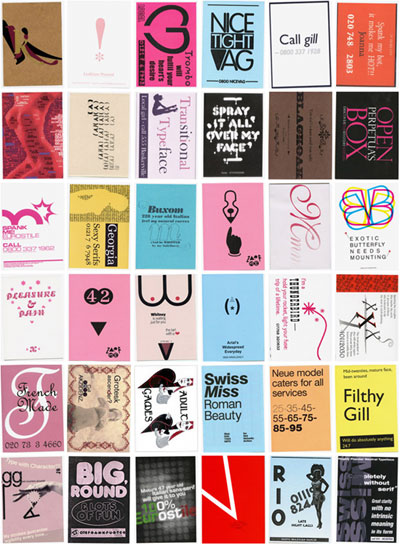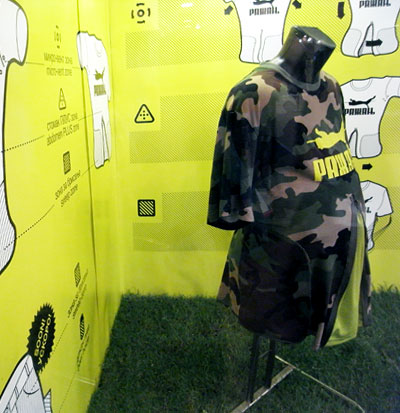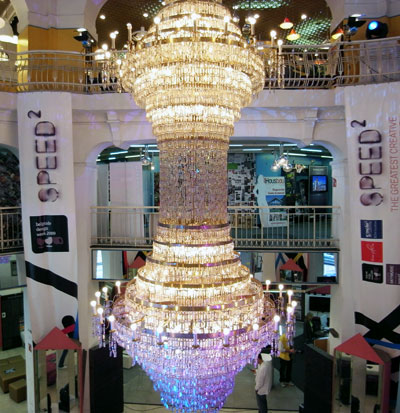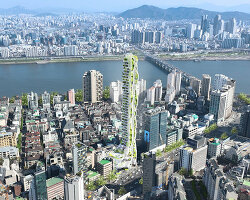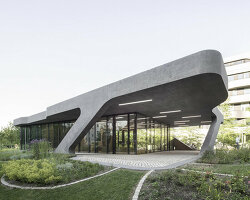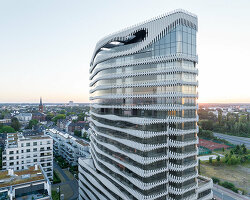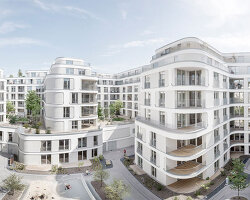the redevelopment of plaza de la encarnacion in seville, spain redefines the potential of a previously unused plaza to become the contemporary urban centre of seville.
in 2004 j. mayer h. architects, one of germany’s leading, young architects was awarded first prize in the competition to redevelop the plaza de la encarnacion in seville, spain. ‘metropol parasol’ explores the potential of the plaza de la encarnacion to become the new contemporary urban centre.the scheme with its large mushroom like structures offers an archeological site, a farmers market, an elevated plaza, multiple bars and restaurants underneath and inside the parasols, as well as a panorama terrace on the very top of the parasols. the construction is planned to be completed at end of year 2009.
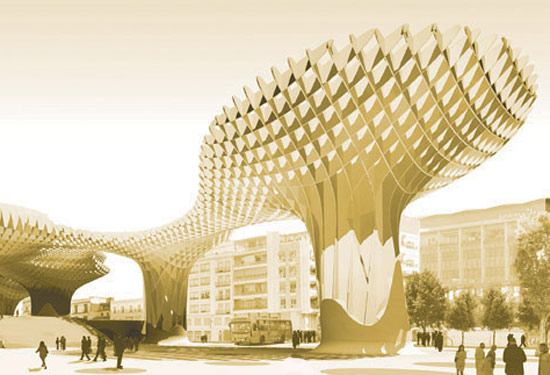 roof structure conceived as a roof structure that provides precious shade during the day, creating a comfortable microclimate and a place for relaxation
roof structure conceived as a roof structure that provides precious shade during the day, creating a comfortable microclimate and a place for relaxation
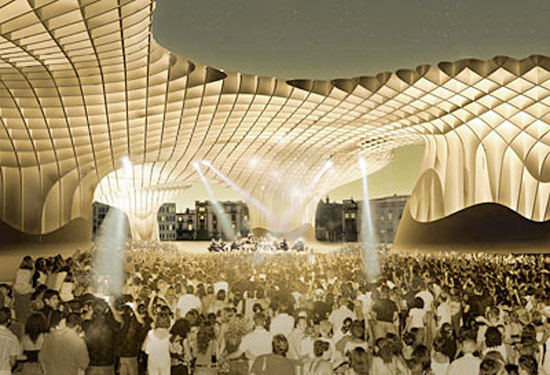 market the organisation of the floor plan allows for most areas of the market to be closed at night while keeping the bars on the north and south edge of the complex open
market the organisation of the floor plan allows for most areas of the market to be closed at night while keeping the bars on the north and south edge of the complex open
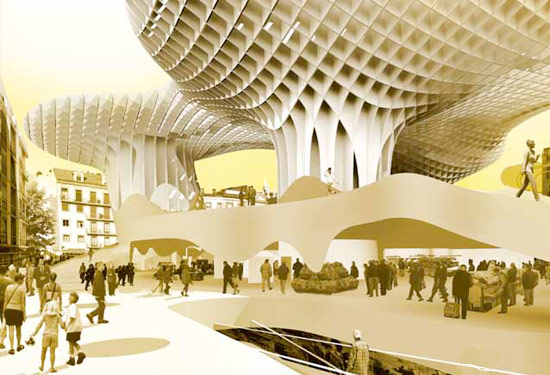 the parasols the columns become prominent points of access to the museum below as well as to the plaza above, connecting the elements and defining a unique relationship between the historical and the contemporary. accessibility to one of the umbrellas provides visitors with a spectacular view of the city and it’s monuments.
the parasols the columns become prominent points of access to the museum below as well as to the plaza above, connecting the elements and defining a unique relationship between the historical and the contemporary. accessibility to one of the umbrellas provides visitors with a spectacular view of the city and it’s monuments.
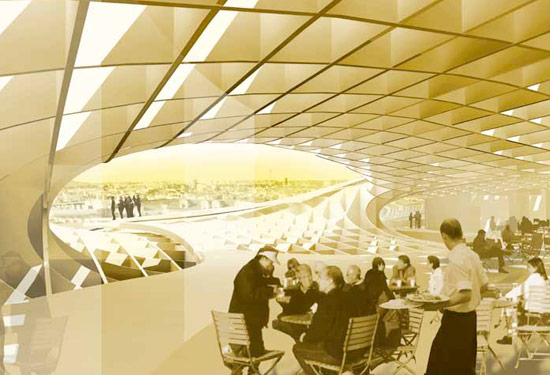 elevated plaza the architectural proposal doubles the original area and creates an additional 4.500 sqm of space. water bassins located in selected areas of the surface further enhance the microclimate and offer attractive locations for sitting and lingering.
elevated plaza the architectural proposal doubles the original area and creates an additional 4.500 sqm of space. water bassins located in selected areas of the surface further enhance the microclimate and offer attractive locations for sitting and lingering.
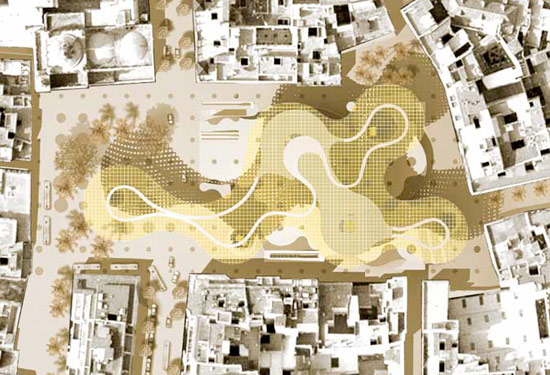 archeological museum several years ago, during the excavation works for an underground car park, archaeological remains were discovered on the site. the city of seville decided then to convert the area into museum and a square to attract locals and tourists. the archeological museum is located underneath the market and visually marked by an entrance inside the thickest column of the parasol.
archeological museum several years ago, during the excavation works for an underground car park, archaeological remains were discovered on the site. the city of seville decided then to convert the area into museum and a square to attract locals and tourists. the archeological museum is located underneath the market and visually marked by an entrance inside the thickest column of the parasol.
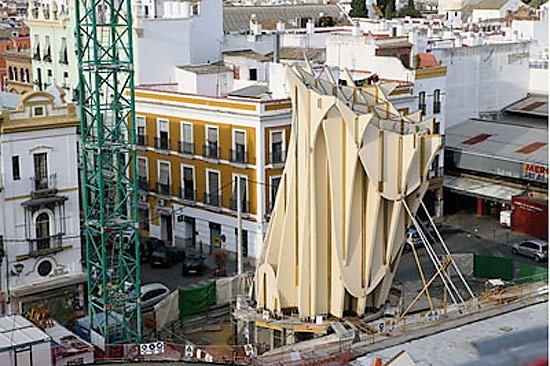 these parasols are made from timber plates covering an area of 150 m x 70 m. it will be one of the largest architectural timber structures ever built. developed in collaboration with engineers at arup.
these parasols are made from timber plates covering an area of 150 m x 70 m. it will be one of the largest architectural timber structures ever built. developed in collaboration with engineers at arup.
 the general contractor for the project is sacyr, who are based in spain and ayuntamiento de sevilla. 50 % of the project is funded by the city of seville, and the other 50% by the leading contractor of advanced wooden structures and timber & glass facades in europe, finnforest-merk (FFM) from aichach in germany.
the general contractor for the project is sacyr, who are based in spain and ayuntamiento de sevilla. 50 % of the project is funded by the city of seville, and the other 50% by the leading contractor of advanced wooden structures and timber & glass facades in europe, finnforest-merk (FFM) from aichach in germany.
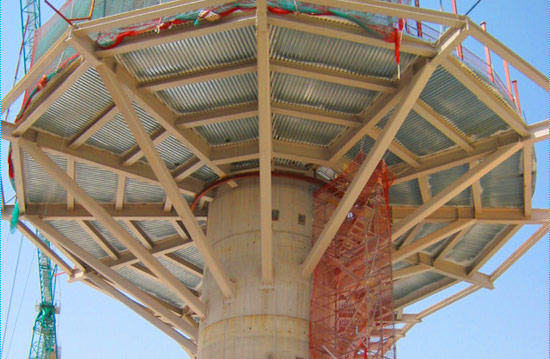 FFM’s kerto-Q light timber beams with a polyurethane coating
FFM’s kerto-Q light timber beams with a polyurethane coating
the polyurethane coating protects the wood and allows it to breathe and the wood itself doesn’t give off hazardous fumes in case it burns. it is sustainably planted, with a certificate PEFC (program for the endorsement of forest certification schemes), granted by the finnish forest council of certification.
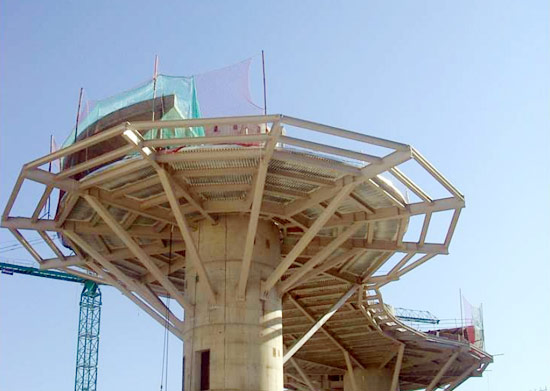 the coat of the structure is self cleaning, and only needs repainting every 20 to 25 years.
the coat of the structure is self cleaning, and only needs repainting every 20 to 25 years.
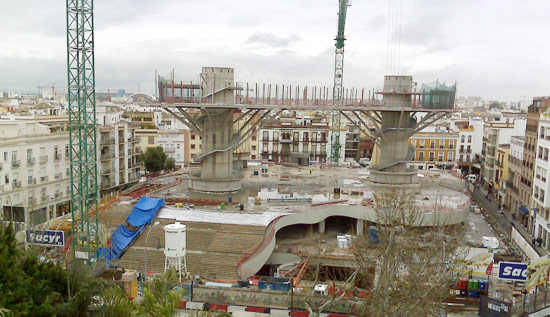 six timber parasols will shade the plaza
six timber parasols will shade the plaza
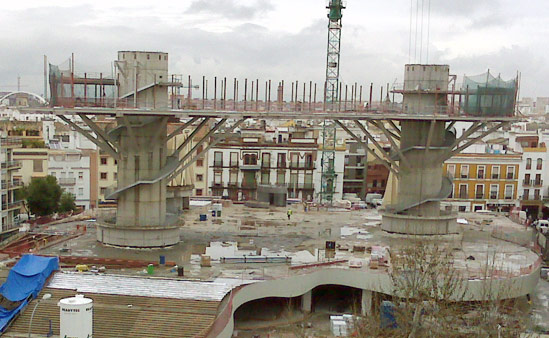 see google maps street view images here
see google maps street view images here
at venice architecture biennial 2008 jürgen mayer h. had a wallpaper in the italian pavilion, designed to neutralize the space once visitors enter the pavilion before proceeding to the various exhibits and mainly leading to the ai wei wei installation.
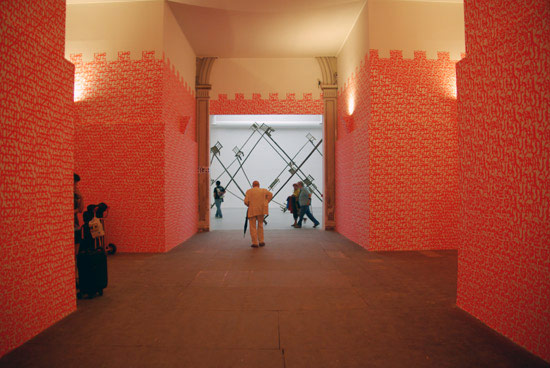
‘pretext’ with data protection patterns by jürgen mayer h. at venice architecture biennial 08, printed in orange neon colour with four different patterns
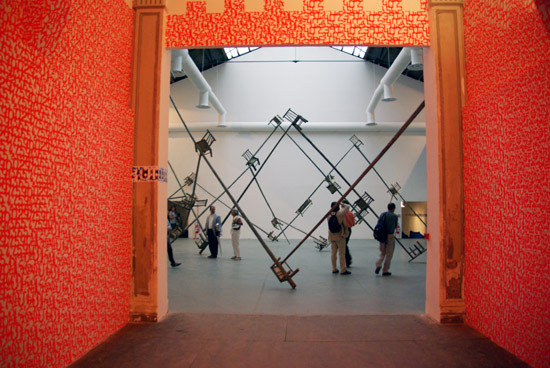
entrance to the ‘mock up, beijing’ exhibition by chinese artist ai weiwei

the grand entrance hall was wallpapered in a dense neon graphic print titled ‘vorwand (pretext)’ by jürgen mayer h, the patterns became three dimensional objects. mayer has a private collection of more than 300 different patterns, some derived from logos, some from camouflage.
the data protection pattern process was invented around 1900 and is similar to the way carbon paper allows to layer text and form upon itself until it becomes illegible. for the berlin-based architect they are a form of contemporary ornament and a metaphor for how we deal today with privacy and data.
 jürgen mayer h. presenting image © designboom
jürgen mayer h. presenting image © designboom
 jürgen mayer h. portrait © designboom
jürgen mayer h. portrait © designboom
designboom was media sponsor and attended belgrade design week 09. curated by jovan jelovac the 3 day conference held from 28 -30th may. the theme was ‘speed 2’ covering the fast pace of our times changing the world, new technologies, faster communication and networking, fast processes of thoughts and production times. jürgen mayer h. was a speaker at the conference.


